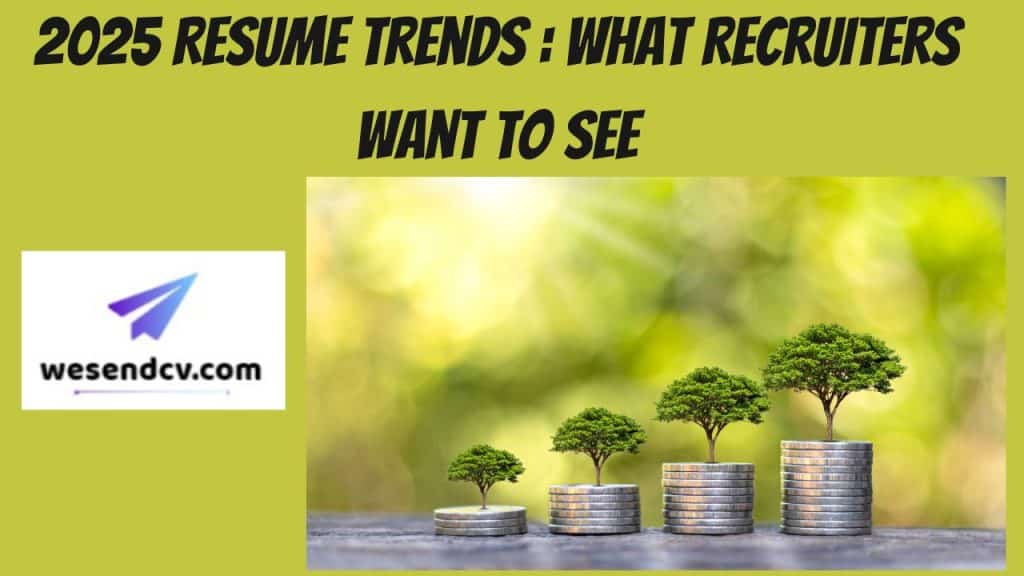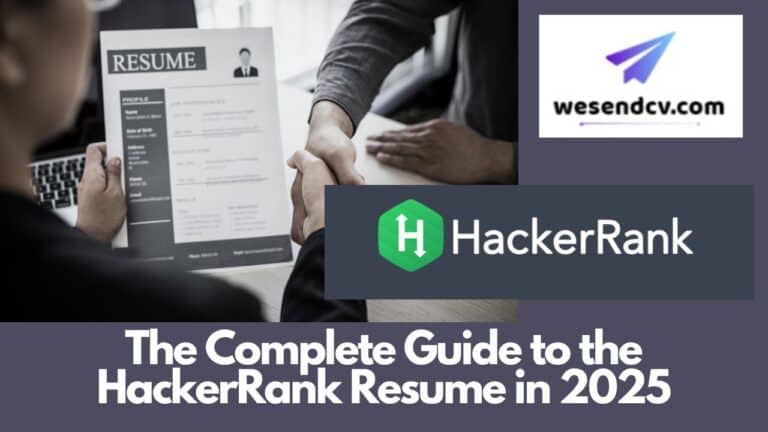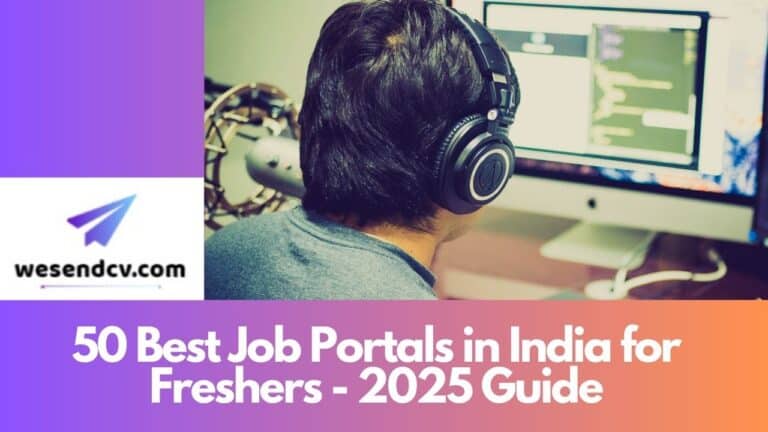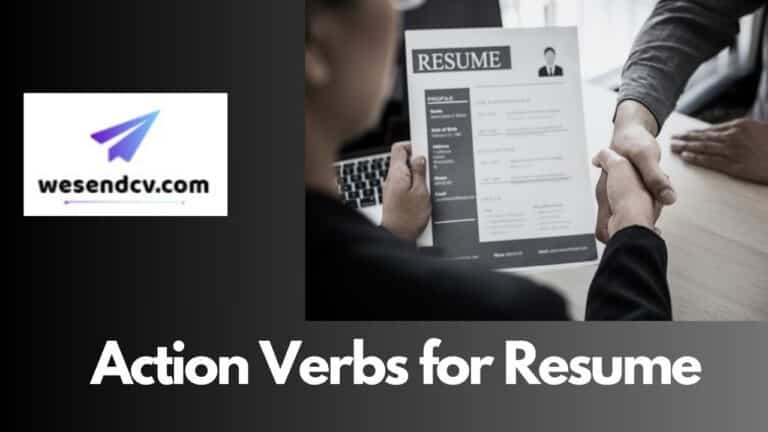The hiring landscape continues to evolve, and your resume needs to keep up. As we move into 2025, recruiters are increasingly looking for modern resumes that don’t just present a list of qualifications, but also reflect your adaptability, relevant skills, and how you’ll add value to their company. Understanding these resume trends will give you a leg up in the competition and help your application stand out.
This guide will break down the top trends in resume writing for 2025, providing actionable tips on how to apply them to your own job search.
Main Highlights of Content
Toggle1. Skills-Based Resumes are Taking Over
In 2025, the focus is shifting from long lists of job responsibilities to a skills-first approach. Instead of just listing out where you’ve worked, recruiters are looking for resumes that highlight key skills relevant to the job you’re applying for.
How to Apply This:
- Create a skills section at the top of your resume.
- Tailor the skills to the job you’re applying for.
- Use examples that prove you’ve applied these skills in real-life situations. For instance, instead of writing “Leadership,” say something like: “Led a cross-functional team to deliver a product launch three weeks ahead of schedule.”
Example:
Skills Section:
- Data Analysis: Conducted in-depth data analysis leading to a 15% increase in efficiency across operations.
- Project Management: Managed 10 projects simultaneously, ensuring each met tight deadlines and budget constraints.
Pro Tip: Tools like the Resume Skills Generator can help you figure out which skills are most relevant to your target industry.
2. ATS-Optimized Resumes are Essential
In 2025, Applicant Tracking Systems (ATS) are being used more than ever to sift through resumes. These systems scan your resume for keywords that match the job description. If your resume isn’t optimized for ATS, it could be rejected before a human recruiter even sees it.
How to Apply This:
- Use job-relevant keywords: Make sure your resume contains the same phrases and keywords as the job description. Tools like the Job Title Keyword Optimizer for ATS are great for this.
- Avoid images, tables, and fancy formatting that can confuse ATS systems.
- Stick to standard headings like Education, Skills, and Experience.
Example:
If a job description mentions “project management” and “budgeting,” include these exact terms in your resume under relevant sections, like in your job history or skills.
3. Short, Concise Resumes Win
In 2025, less is more. Recruiters spend an average of 6-7 seconds scanning a resume. Resumes that are concise, to the point, and easy to read are more likely to capture attention. For most professionals, a one-page resume is ideal.
How to Apply This:
- Use bullet points to make your resume scannable.
- Focus on relevant experience and remove outdated information (like high school jobs if you’re mid-career).
- Keep descriptions short. For each position, aim for 3-5 bullet points max, highlighting the impact you had.
Pro Tip: Use the Resume Length Calculator to help determine if your resume is too long or too short for your experience level.
4. Data and Metrics Speak Louder Than Words
Resumes in 2025 need to show quantifiable achievements. Recruiters love to see metrics that illustrate the value you brought to your previous roles. This could be anything from increasing sales by a certain percentage, to reducing costs, to improving team productivity.
How to Apply This:
- Wherever possible, include numbers to back up your claims. Instead of “Improved team efficiency,” say, “Increased team efficiency by 20% over six months.”
- If you don’t have exact numbers, make reasonable estimates.
Example:
“Developed a new customer service protocol that reduced wait times by 15%.”
Including metrics demonstrates your impact in a clear, measurable way.
5. Showcase Soft Skills
In 2025, soft skills such as emotional intelligence, adaptability, and problem-solving are gaining more attention. While hard skills are still crucial, recruiters want to know how well you work with others, how you handle challenges, and how you contribute to a positive work culture.
How to Apply This:
- Incorporate soft skills into your job descriptions. For example, “Effectively collaborated with cross-functional teams to complete projects on time.”
- Use real-life examples to show how you’ve demonstrated these skills in previous roles.
Example:
“Collaborated with a team of 5 to streamline communication between departments, reducing delays in project timelines by 10%.”
6. Visual Resumes on the Rise (But Be Careful)
More and more people are turning to visual resumes in 2025, especially for creative fields. These resumes include graphics, charts, or infographics to represent data, making them visually appealing. But be cautious: while visual resumes can make you stand out, they can also be ATS-unfriendly.
How to Apply This:
- For roles in marketing, design, or other creative industries, consider adding visual elements, but make sure you have an ATS-friendly version too.
- Tools like Resume Data Visualization can help you create these resumes without compromising clarity.
7. Remote and Hybrid Skills in Demand
The shift toward remote work is here to stay in 2025. Employers want to see that you’re capable of working independently and have the digital literacy skills to thrive in a remote or hybrid environment.
How to Apply This:
- Highlight any remote work experience you have. Even if your previous jobs weren’t remote, mention any experience with virtual collaboration tools (e.g., Slack, Zoom, Microsoft Teams).
- Demonstrate your ability to manage your time effectively, communicate with distributed teams, and meet deadlines without in-person supervision.
Example:
“Managed a remote team of 6, ensuring all project milestones were met, and maintained consistent communication through Slack and Zoom.”
8. Personal Branding Matters
In 2025, recruiters are increasingly looking at a candidate’s personal brand. Your LinkedIn profile, portfolio, or personal website should complement your resume. Consistency across these platforms shows recruiters that you’re intentional about your career and how you present yourself.
How to Apply This:
- Include links to your LinkedIn, portfolio, or personal website at the top of your resume.
- Make sure your LinkedIn profile is fully optimized and aligned with the experience listed on your resume.
9. Customised Resumes for Every Application
Gone are the days of sending out generic resumes. In 2025, recruiters expect a resume that’s tailored to the specific job you’re applying for.
How to Apply This:
- Customize your resume for each job. This doesn’t mean rewriting it completely—just tweak the objective statement, skills section, and work experience to align with the job description.
- Use Free Resume Tools to help adjust your resume for different roles easily.
Pro Tip: Ensure that your resume addresses key terms and requirements mentioned in the job ad, increasing your chances of getting through ATS and impressing recruiters.
10. The Importance of Cover Letters in 2025
Even with the best resume, a strong cover letter is still crucial in 2025. It’s your chance to explain why you’re the best fit for the role and to show a bit of personality. Many recruiters still expect cover letters, especially for positions that require communication or writing skills.
How to Apply This:
- Write a custom cover letter for each application, highlighting your motivation for the role and the company.
- Keep it concise, professional, and tailored to the job you’re applying for.
- Tools like the Cover Letter Generator can help you create customized cover letters quickly.
FAQs About 2025 Resume Trends
Q: What resume format should I use in 2025?
A: A hybrid resume format is ideal, blending both skills and experience. This format allows you to showcase your most relevant abilities while still listing work experience.
Q: Is a one-page resume still enough in 2025?
A: For most professionals, yes. If you have 10+ years of experience or are in a senior role, two pages are acceptable. However, keep the resume concise and only include information that’s directly relevant to the job.
Q: How important are metrics in a resume?
A: Metrics are incredibly important in 2025. They give employers tangible evidence of your achievements and show how you’ve contributed to your previous employers.
Q: Can I use creative designs on my resume?
A: You can, but be careful. Creative designs may not be ATS-friendly. Always have a plain-text version of your resume for submissions through ATS.
Q: Should I still include an objective statement?
A: Yes, an objective statement at the top of your resume can help frame your goals and show how you align with the job’s requirements.
By following these 2025 resume trends, you’ll position yourself ahead of the competition and ensure your resume speaks to what recruiters are really







